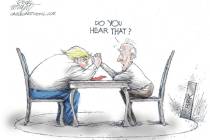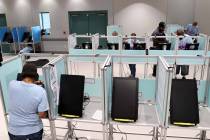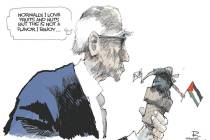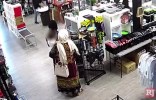DNA evidence
It used to be assumed that matching a suspect's fingerprints to those found at a crime scene was irrefutable proof you had the right man -- until the well-publicized case of American lawyer Brandon Mayfield, incorrectly linked by so-called FBI "fingerprint experts" to the scene of the 2004 Madrid train bombings.
It then turned out Scottish police officer Shirley McKie had also been wrongly accused of having been at a murder scene in 1997 after a print supposedly matching hers was found near the body.
Then came Stephan Cowans, who had served six years in a Massachusetts prison for shooting a police officer but was released in 2004 after the fingerprint evidence on which he had been convicted was trumped ... by DNA.
Itiel Dror, a psychologist at Southampton University in England, then did an experiment in which he supplied six fingerprint experts from various countries including England and the United States with eight marks from crime scenes (called "latent prints") and eight inked marks from suspects -- fingerprints on which these same experts had already testified in court, though he didn't tell them that.
Of the 48 tests, the experts changed their "match" decision in six cases and only two of the experts were consistent with their previous decision in all of their cases.
Although the U.S. Department of Justice had long held that fingerprint evidence had a "zero error rate" and was thus beyond legal dispute, "Fingerprinting has never been scientifically validated," New Scientist magazine reported in 2005. "The so-called Daubert ruling introduced by the Supreme Court in 1993 set out five criteria for admitting expert testimony. One is that forensic techniques must have a known error rate, something that has never been established for fingerprinting."
The New Scientist reports there may have been 1,900 mistaken fingerprint matches in the United States in 2002 alone.
Now, it appears the "irrefutable nature" of DNA evidence may be heading down the same toilet.
The FBI has been in the habit of reporting that if analysts could match DNA samples at nine of the 13 locations on chromosomes, or loci, they were sure they had the right guy; odds were 1 in 113 billion that they were wrong.
Until, in 2001, Arizona crime laboratory analyst Kathryn Troyer was running tests on her state's DNA database when she stumbled across two felons with remarkably similar genetic profiles. Could they be twins by birth? Highly unlikely -- the mug shots of the two felons showed one was black, the other white.
Bicka Barlow -- a San Francisco defense attorney defending a man accused of a 20-year-old rape and murder based on a nine-locus match between her client's DNA and semen found in the victim's body -- came across Ms. Troyer's findings and subpoenaed a new search of the entire Arizona DNA database. Among about 65,000 felons, it turned out, were 122 pairs that matched at nine of 13 loci. Twenty pairs matched at 10 loci. One matched at 11 and one at 12, though both of those involved relatives.
Mr. Barlow had been told the odds of such a coincidental match were 1 in 108 trillion. It now appeared the chance was closer to 1 in 500.
If 600,000 other Americans were walking around with the same DNA -- as measured by the "9-locus test" -- should such a "match" be sufficient to send a man to prison for life?
As word of Ms. Troyer's findings spread, did the FBI respond by attempting to recreate her findings to see if they were valid? No. Instead, they "tried to stop distribution of Troyer's results and began to block similar searches elsewhere, even those ordered by courts," The Los Angeles Times reported this week.
But in two states -- Maryland and Illinois -- judges overruled FBI objections. "The resulting searches found nearly 1,000 more pairs that matched at nine or more loci," the Times reports.
In Illinois, 903 pairs of profiles matching at nine or more loci turned up in a database of about 220,000. In Maryland, with a "database of fewer than 30,000 profiles, 32 pairs matched at nine or more loci," the Times reports. Three of the pairs were "perfect" matches, identical at 13 out of 13 loci.
States now compare all 13 DNA loci when they can, though fewer are often available from old or contaminated crime scenes.
Make no mistake: DNA sampling -- like fingerprinting -- can still be highly useful in investigating crimes. It can help weed out numerous innocent suspects. It can steer police to concentrate their efforts on suspects that appear statistically more likely to be "of interest."
But if such evidence is given to juries, the odds of a "coincidental match" with an innocent party -- the realistic odds, based on searches such as Ms. Troyer's, not something out of astronomy book -- should be carefully explained.























